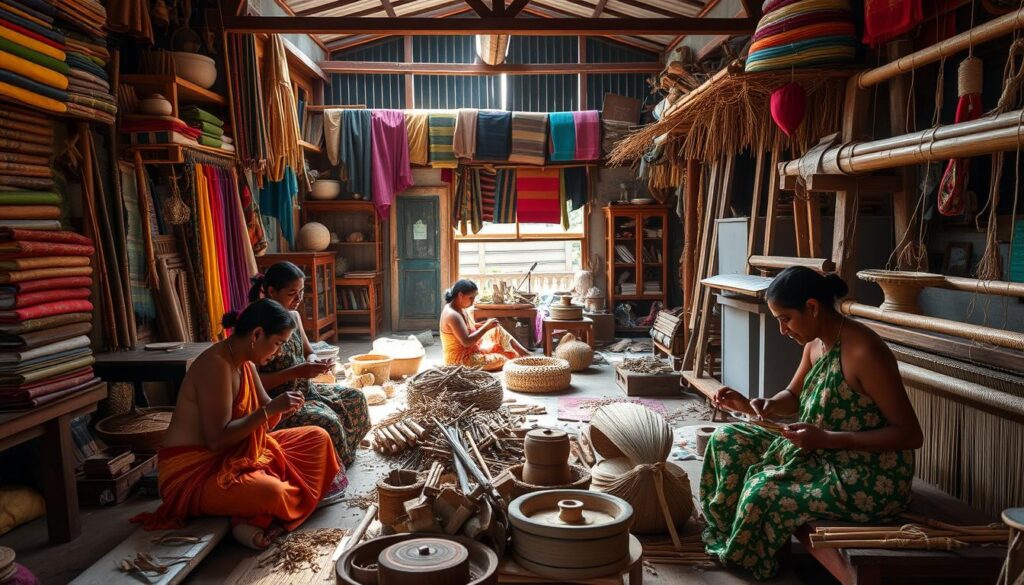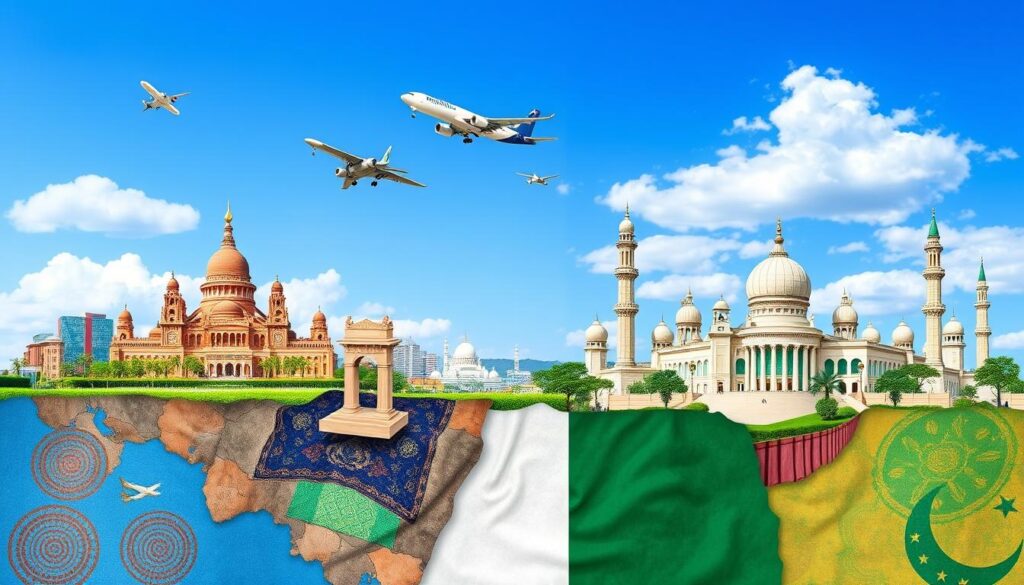Revival of Traditional Handicrafts Boosts Local Artisans in 2023
In 2023, traditional handicrafts have made a comeback in Sri Lanka. This revival has empowered local artisans and boosted economic growth. The renewed interest in handmade goods, along with government support, has created a thriving handicraft sector.

The creative economy plays a vital role in global GDP. It contributes between 2% and 7% to national GDPs worldwide. In Sri Lanka, the handicraft sector has grown significantly, offering jobs to many people.
Women and young adults aged 15-29 have particularly benefited from this growth. The government has recognized the importance of handicrafts in preserving culture and promoting development.
To support artisans, the government has launched various initiatives. These programs provide training, market access, and financial aid. This support has been crucial in reviving traditional crafts and empowering local artisans.
Sustainable and eco-friendly materials have become increasingly popular in handicrafts. Artisans now use more locally sourced, natural materials. This approach reduces environmental impact and adds value to the products.
These sustainable practices highlight the authenticity of the crafts. They also strengthen the connection between the products and local culture.
The Resurgence of Traditional Handicrafts
Traditional handicrafts are making a comeback. People now value handmade goods and want to support local artisans. This trend has created new opportunities for craftspeople to showcase their talents.
Consumers seek unique, authentic, and sustainable products. These items reflect the rich cultural heritage of their communities. The demand for indigenous crafts has grown as a result.
Renewed Interest in Handmade Products
The global handicrafts market is booming. It’s expected to reach USD 847,730 million by 2028. This growth is driven by sustainable practices and digital transformation.
Customization and personalization trends are also fueling the market. People are drawn to the uniqueness of handmade products. They appreciate the skill and cultural significance behind each piece.
Government Initiatives Supporting Artisans
Governments and NGOs recognize the potential of the handicrafts sector. They’ve launched programs to support artisans. These include training, financial aid, and marketing assistance.
In Nanhan village, China, over 1,700 locals work in traditional crafts. The village’s annual income exceeds 130 million yuan. More than 200 villagers possess multiple craft skills.
Sustainable and Eco-Friendly Crafting Materials
Consumers are becoming more environmentally conscious. This has led to a growing demand for sustainable crafting materials. Artisans are responding by adopting eco-friendly practices.
Many craftspeople now use natural dyes and recycled materials. They also source raw materials locally. These practices appeal to consumers who prioritize ethical buying.
Empowering Local Artisans through Skill Development
Sri Lanka’s handicrafts sector generates employment and boosts economic growth. Artisans face challenges like limited funds and low tech adoption. The government and organizations are helping artisans through skill development programs.
Training Programs and Workshops
The government has launched schemes to support artisans. The Ambedkar Hastshilp Vikas Yojna includes community empowerment and design upgradation workshops. These initiatives aim to enhance artisans’ skills and modernize handicraft centers.
The programs improve artisans’ living standards and create job opportunities. They focus on skill enhancement and technology adoption in the handicraft sector.
Collaborations with Designers and Entrepreneurs
Artisan-designer collaborations create unique handmade products, attracting new audiences. Designers like Anita Dongre and Ritu Kumar work in textile conservation and revival. They showcase Sri Lanka’s handmade traditions globally.
These partnerships preserve cultural heritage and bridge traditional and modern textiles. They combine traditional techniques with innovative design approaches.
Local organizations support artisan communities through cultural heritage programs. These efforts revive traditional textile-making techniques and increase demand for authentic products. Sri Lanka preserves its heritage while creating sustainable livelihoods in the creative economy.
Preserving Cultural Heritage and Promoting Sustainable Tourism
Traditional handicrafts play a vital role in preserving cultural heritage. They also foster sustainable tourism practices. Travelers now seek authentic experiences beyond landmarks, engaging with local customs and identities.
Supporting artisans contributes to community economic vitality. It also establishes a connection between cultural preservation and sustainable destination development.
Preserving Cultural Heritage
In many Best Tourism Villages, women lead in preserving cultural heritage. They do this through traditional handicrafts like weave-making, pottery, and beekeeping.
Women’s leadership in promoting local heritage is evident in places like Nglanggeran, Indonesia. Their role highlights community engagement and empowerment in sustainable tourism activities.
Creating Sustainable Livelihoods
Women-led entrepreneurship drives economic development and cultural preservation in artisan communities. In Aguarico, Ecuador, women lead culinary entrepreneurship. In Chacas, Peru, they craft artisanal products.
SMART village strategies blend traditional practices with modern techniques. These create sustainable livelihoods for artisans and their families in places like Valeni, Moldova.
Fostering Community Engagement
Women-led initiatives celebrate and preserve unique local cultural traditions. The Tokaj Women and Wine Association in Hungary is one example.
These efforts engage the community and attract culture-seeking tourists. Women drive sustainable tourism practices that benefit local economies and preserve cultural heritage.
Conclusion
The revival of traditional handicrafts in 2023 can boost local artisans and preserve cultural heritage. It promotes sustainable development in Sri Lanka. By embracing innovation and fair practices, the handicraft sector can empower artisans and create sustainable livelihoods.
Mass-produced goods and waning youth interest pose challenges to the handicraft sector. However, various initiatives aim to preserve heritage and ensure artisans’ livelihoods. International agencies, governments, and NGOs provide crucial support for craft production.
Artisans are forming cooperatives to share resources and improve bargaining power. Craft villages worldwide showcase thriving traditional crafts supported by cooperatives and government schemes. Global craft exports are reaching significant levels, with substantial growth in the Indian handicraft industry.
The future of handicrafts looks promising, with growth expected in emerging markets. There’s a rising demand for sustainable and unique products. Sri Lanka’s support for traditional handicrafts is essential for preserving these cultural treasures.
Safeguarding crafts involves understanding, representing, and valuing these cultural assets. Artisans, governments, and organizations must work together to ensure handicrafts’ revival. This effort will boost local artisans and contribute to cultural heritage preservation.



